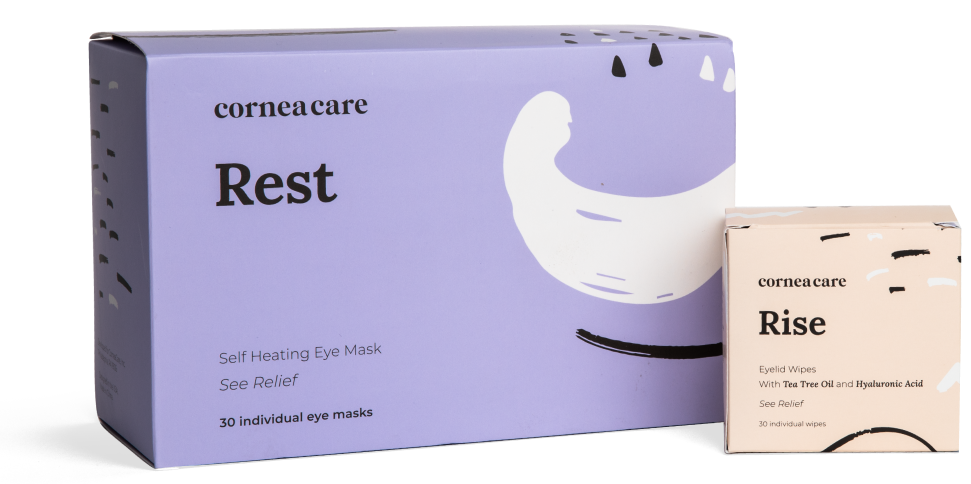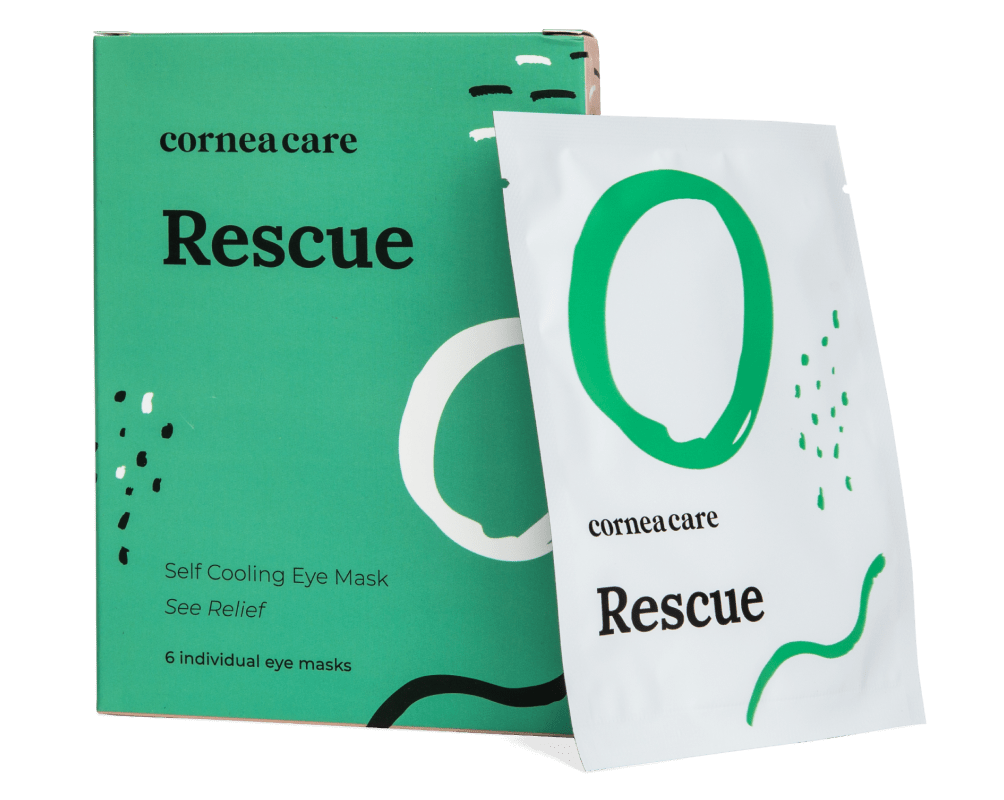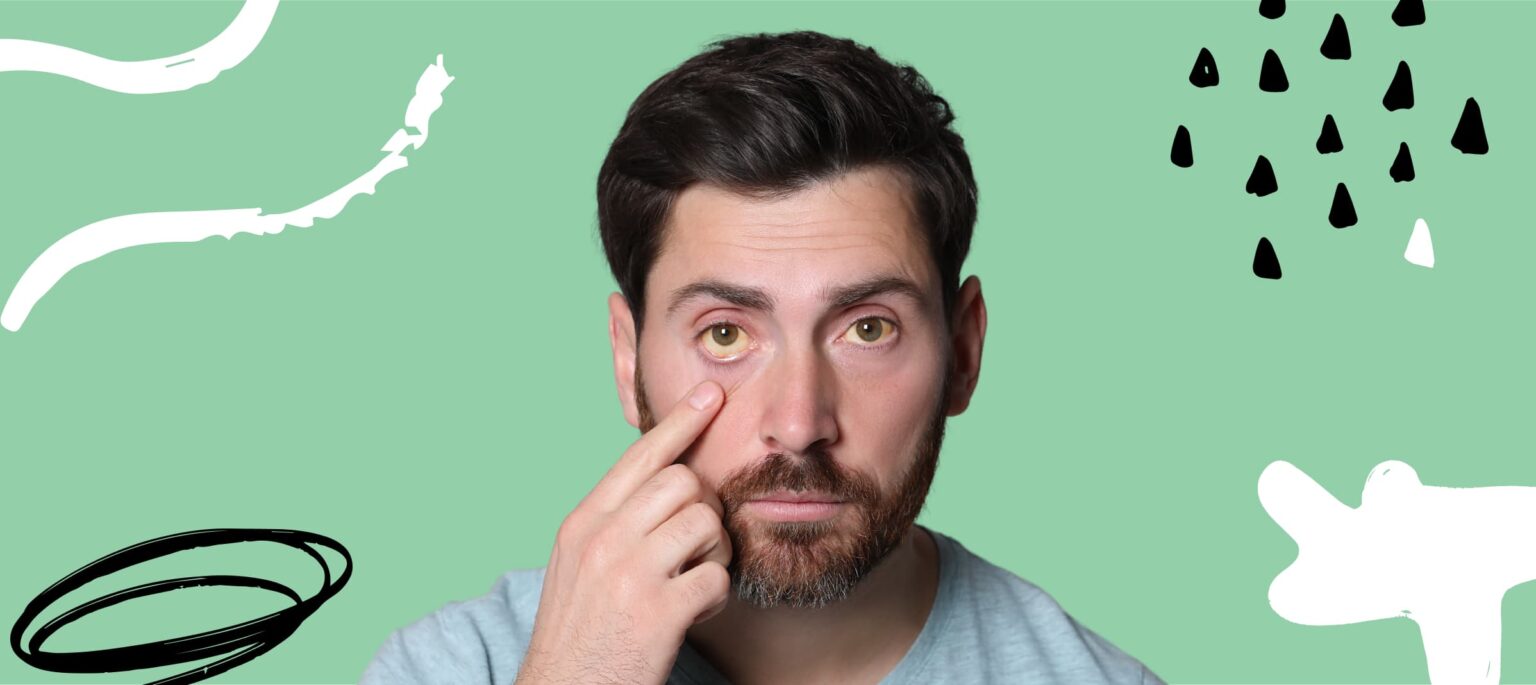Why is the White Part of My Eye Discolored?
The sclera is the white part of your eyeball. Any noticeable deviation from the typical white color can raise concerns about the state of your ocular health. Eye discoloration in the white part of the eye can manifest in a variety of colors, including yellow, red, blue, grey or brown.
There are a multitude of factors that can contribute to eye discoloration and many of them are harmless. However, if you notice eye discoloration that worries you, make an appointment to visit your eye doctor (optometrist or ophthalmologist) for an eye exam.
Key Points
- Eye discoloration in the white of the eye can have various causes ranging from common irritants to rare disorders.
- Pink or red discoloration may be caused by allergies, dry eyes or contact lenses, and artificial tears can help relieve your symptoms.
- Red eyes combined with pain or discharge should be evaluated by your eye doctor right away.
What’s Causing the Discoloration of the Whites of My Eyes?
While eye discoloration may be a relatively common occurrence, it’s important to recognize the potential causes. Various factors contribute to a change in the color of the sclera (white part of the eye). The causes range from benign conditions to more serious medical issues. Understanding the root causes of scleral discoloration is necessary for accurate diagnosis, prompt intervention and the preservation of good ocular health.
Eye discoloration in the white of the eye can be caused by external elements you may be able to control. These include prolonged exposure to environmental irritants like sunlight, dust or chemicals, which can cause temporary changes to scleral appearance. Additionally, certain lifestyle choices, like smoking, may also contribute to eye discoloration.
However, eye discoloration can also point to underlying health conditions that require medical attention. Let’s take a closer look at the different colors that are possible and their potential causes.
Red or Pink Discoloration in the White of the Eye
Red or pink discoloration in the white part of the eye is a common occurrence that can be attributed to several underlying causes.
Inflammation and irritation
One common cause for red or pink discoloration of the sclera is ocular surface inflammation, also known as conjunctivitis (pink eye). This condition occurs when the conjunctiva, the thin transparent layer covering the sclera, becomes infected or irritated. In addition to redness, other symptoms such as itching, watering and discharge may be present. Pink eye caused by a viral infection is contagious and may require medical treatment.1
Red bloodshot eyes appear when tiny blood vessels in the conjunctiva become dilated. The causes of this reddish appearance include tired eyes from computer vision syndrome, dry eyes, irritation from contact lenses, and exposure to smoke. Starting a good eyelid hygiene routine and consistent use of artificial tears can help alleviate redness and irritation.
Colds and allergies can also contribute to red or pink discoloration of the white of the eye. Eye drops or oral medications may help alleviate symptoms and reduce redness.2

Foundation
Eyelid Hygiene Plan 2
Perfect for eye dryness, burning, itching, crusting/flaking of eyelashes and inflamed eyelids. Free shipping 📦.
Try today - $45
Subconjunctival hemorrhage
Another possible cause of red or pink discoloration is subconjunctival hemorrhage. This occurs when small blood vessels in the conjunctiva rupture, leading to the leakage of blood into the surrounding tissue. Although the appearance can be alarming, subconjunctival hemorrhage is usually harmless and may result from minor trauma, eye rubbing or even a sudden increase in blood pressure. The redness typically resolves on its own over time without any specific treatment.3
Glaucoma and uveitis
In some cases, red eyes may be a sign of more serious underlying eye problems such as glaucoma or uveitis. Glaucoma is an eye condition associated with increased eye pressure that damages the optic nerve. While it can lead to vision loss or even blindness, the more common form, open-angle glaucoma, has no symptoms until later stages. However, the less common form, angle-closure glaucoma, may present with red eyes, pain and vision loss.4
Uveitis, an inflammation of the uvea (the middle layer of the eye), can cause redness and discomfort. Other symptoms such as eye pain, light sensitivity and blurred vision may accompany the redness.
Red eyes combined with pain, discharge or blurry vision should be promptly evaluated by your eye doctor to prevent potential complications and preserve vision.
Yellow Discoloration in the Whites of Your Eyes
If you notice a small yellowish bump on the white of your eye, it may be a pinguecula. A pinguecula is a small patch of yellow tissue that bulges slightly from the conjunctiva, the transparent film covering the sclera. Pterygium, or surfer’s eye, is characterized by a larger, yellowish wedge-shaped growth that can extend onto the cornea, potentially obstructing vision. These sorts of bumps on the eye are commonly caused by a combination of ultraviolet (UV) damage from the sun and exposure to wind or dust.5
On the other hand, if the entire sclera appears yellow or light green, it often indicates the presence of jaundice. Jaundice arises from an accumulation of bilirubin, a byproduct of the breakdown of red blood cells. Ordinarily, the liver filters out bilirubin and converts it into bile, which is then stored in the gallbladder and excreted by the body. However, when the liver, gallbladder, or pancreas experience dysfunction, bilirubin levels can rise, leading to jaundice.6
This yellowing of the sclera can serve as a crucial visual indicator of an underlying systemic issue, such as liver disease. If you notice the whites of your eye turn yellow, see your doctor right away.
When the Whites of Eyes Look Brown
Brown spots can appear in the sclera as a nevus or freckle, a distinctive yet harmless feature of otherwise healthy eyes. In individuals of African descent, the sclera may have a brownish discoloration in spots or patches. These areas of color can be attributed to elevated levels of the dark brown pigment known as melanin and are no cause for concern.6
However, brown spots on the sclera can occasionally indicate more serious conditions. One such condition is primary acquired melanosis (PAM), a precancerous condition characterized by the emergence of a flat and painless brown spot on the eye. Resembling a brown freckle, this spot may undergo gradual changes over time. Typically affecting middle-aged individuals and manifesting in a single eye, PAM demands prompt attention as it possesses the potential to transform into a cancerous growth, thereby posing a life-threatening risk.7
If you notice any new brown spots on your eye, it’s a good idea to consult your eye doctor for an evaluation.

Rescue
Cold Compresses
Perfect for sudden flare-ups of eye dryness, pain, burning, and swollen/inflamed eyelids. Free shipping 📦.
Try today - $12
Blue or Grey Eye Discoloration in the White of Your Eye
Blue or grey discoloration in the white part of the eye can be attributed to various underlying factors. Prolonged use of minocycline, an antibiotic prescribed for the treatment of rosacea, acne, and sometimes rheumatoid arthritis, can cause the sclera, as well as the skin, ears, fingernails, or teeth to develop a blue-grey tint.8
Certain medical conditions can cause the sclera to be thinner than usual. In these cases, the underlying choroid tissue shows through resulting in a blue or grey discoloration of the whites of your eyes. Individuals with anemia, iron deficiency and chronic uveitis may develop a thin sclera.8
In rare cases, blue or grey eye discoloration can be indicative of a disorder such as osteogenesis imperfecta (a genetic bone disease) or Marfan’s syndrome (a connective tissue disorder). Another rare condition known as argyria can also cause blue or grey discoloration of the sclera. Argyria occurs as a result of prolonged exposure to or ingestion of silver particles or compounds. This may be due to occupational exposure or excessive use of certain medications or dietary supplements.8
The Role of Medications and Supplements in Eye Discoloration
Certain medications and dietary supplements can contribute to changes in the sclera’s appearance. Long-term use of specific antibiotics, such as minocycline, has been linked to blue or grey discoloration. Similarly, excessive intake of carotenoid-rich supplements, like beta-carotene or vitamin A, may result in a yellowish hue to the sclera.
While these changes are often harmless, they can sometimes signal improper medication use or unanticipated side effects. Discuss any noticeable eye discoloration with your healthcare provider so they can evaluate the relationship between your medications or supplements and the observed changes.
Eye Discoloration FAQs
Yellow discoloration of the white of your eyes can be an indicator of a serious condition associated with the liver, gallbladder, or pancreas. Dysfunction of these organs can lead to jaundice. Jaundice results from a buildup of bilirubin, a byproduct of the breakdown of red blood cells, and causes a yellowish appearance of the sclera (white part of the eye). If you notice the whites of your eyes turn yellow, consult your doctor for proper diagnosis and treatment.
Blue or grey discoloration in the white part of the eye can have many causes. Prolonged use of the antibiotic, minocycline, can lead to a blue-grey tint in the sclera, as well as other body parts. Certain medical conditions, including anemia, can also result in blue or grey discoloration.
Rare disorders like osteogenesis imperfecta (brittle bone disease), Marfan’s syndrome (a connective tissue disorder), or argyria (caused by exposure to silver) can contribute to a blueish discoloration. We recommend seeing your healthcare professional if you notice blue-grey eye discoloration in the white part of your eye.
Eye discoloration in the white part of the eye (the sclera) can stem from various causes. One common reason is the presence of harmless bumps or patches, such as pinguecula. Yellowing of the sclera is a sign of jaundice, resulting from liver, gallbladder, or pancreatic dysfunction. Red or pink discoloration can occur due to conjunctivitis, allergies, or uveitis. Blue or grey discoloration may arise from conditions like osteogenesis imperfecta or argyria. If you have concerns about eye discoloration in the white part, check with your doctor. It’s best to consult with an eye care professional for a thorough evaluation.
Putting It All Together
Recognizing the causes of eye discoloration allows for early identification of the underlying condition. Timely treatment and management can ultimately contribute to the preservation of vision and overall ocular health.
If you notice changes in the color of the sclera, a call to your eye doctor is recommended. This is especially important if the eye discoloration is accompanied by pain, blurred vision, or other symptoms. Your eye care professional can identify the underlying cause and create a treatment plan.
What’s Next
Want to learn more about bumps and other irregularities in your eyes? Check out related articles on the Eye Health & Wellness blog.



